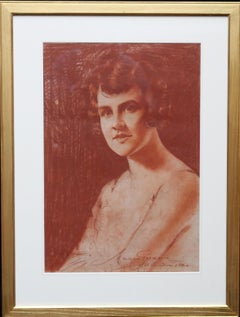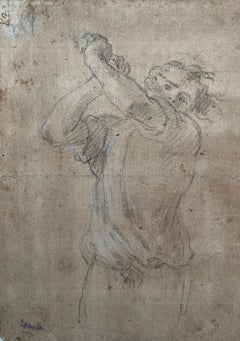Count Mario Grixoni Art
Count Mario Grixoni was born in a noble family in Genoa, Italy. Grixoni said that he did not remember ever wanting to be anything other than a painter. As a child, his drawings attracted the attention of Grosso and other renowned artists and from then his fate was sealed. The happy success that had smiled at his work was not, however, achieved without severe struggles. Grixoni arrived in London at the age of 23 with three children to support and little money in his pocket. He was in London for more than a quarter of a century and always worked and studied tirelessly with John Singer Sargent and Sir William Orpen, the two great English portraitists, who were his close friends. His portraits, of the pure Italian school and full of grace and life, recall the style, especially of Orpen who too, although Irish, greatly devoted himself to the study and the love of the Italian grandmasters of the brush. In later years, Grixoni also painted 25 portraits in Scotland and 20 in London plus other great portraits, commissioned by the municipality of Dundee and which deserved major expressions of praise and gratitude both from the authorities of that city and the Scottish Press. The son and nephew of senior officers of the Army and Navy, (his father was General of the Italian Army and his brother, Francesco, rose to the rank of Admiral), Grixoni started a Naval career, which he soon left to devote to art. Various of his ancestors were also famous painters in the past centuries; from the 14th century Grixoni, of whose fame the British Museum holds documents, to Giuseppe Grixoni, the disciple of Tomaso Redi, who in the 1700s was a talented painter of portraits and left an enduring record of his work in a remarkable self-portrait in the Palazzo Pitti in Florence. Two beautiful paintings by Mario Grixoni adorned the Exhibition at the Fascia in 1935. His works have been exhibited in many galleries across Europe and beyond, including the Royal Academy of Arts in London and the Salon in Paris. He was a member of the Chelsea Arts Club, the St. Johns Wood Arts Club, also part of the Council of the Pastel Society and the Council of the Arts Club in London.
1920s Art Deco Count Mario Grixoni Art
Chalk
16th Century Old Masters Count Mario Grixoni Art
Chalk, Laid Paper
21st Century and Contemporary Academic Count Mario Grixoni Art
Paper, Conté, Crayon
2010s Renaissance Count Mario Grixoni Art
Chalk, Handmade Paper, Graphite
1930s Art Deco Count Mario Grixoni Art
Chalk, Charcoal
1930s Art Deco Count Mario Grixoni Art
Chalk, Charcoal
21st Century and Contemporary Contemporary Count Mario Grixoni Art
Chalk, Handmade Paper, Graphite
1920s Art Deco Count Mario Grixoni Art
Paper, Chalk, Charcoal, Pastel
17th Century Old Masters Count Mario Grixoni Art
Chalk
1910s Art Deco Count Mario Grixoni Art
Paper, Conté
1890s Impressionist Count Mario Grixoni Art
Paper, Chalk
Early 19th Century Old Masters Count Mario Grixoni Art
Paper, Chalk
Early 17th Century Old Masters Count Mario Grixoni Art
Chalk

